

Unclaimed: Are are working at Wrike ?
Wrike Reviews & Product Details
Harping on its versatility, Wrike is a project management software that features highly customizable dashboards and workflows and team-specific automation to give businesses a project platform that adapts to their current ways of working and not the other way around. Wrike’s functionalities involving over 400 tools revolve around giving a 360-degree view of projects, true interdepartmental collaboration, approvals acceleration, smarter data use, efficient workload management, and enterprise-grade security. Wrike has more than 30 well-documented use cases involving more than 15 departments and teams. Wrike also has a proprietary AI-powered capability called Work Intelligence that catalyzes results through smart automation and project risk prediction.

( 1 )
| Capabilities |
|
|---|---|
| Segment |
|
| Deployment | Cloud / SaaS / Web-Based, Desktop Mac, Desktop Windows, Mobile Android, Mobile iPad, Mobile iPhone |
| Support | 24/7 (Live rep), Chat, Email/Help Desk, FAQs/Forum, Knowledge Base, Phone Support |
| Training | Documentation |
| Languages | English |
Wrike Pros and Cons
- Easy to use Gantt charts
- Customizable dashboard and schedule
- Comprehensive reports and insights
- Time-tracking tools included
- Excellent customer service
- A little pricey
- Can be difficult to get used to at first
- Frequent reports of unresponsive support
- Recorded incidents of unreliable software functionality
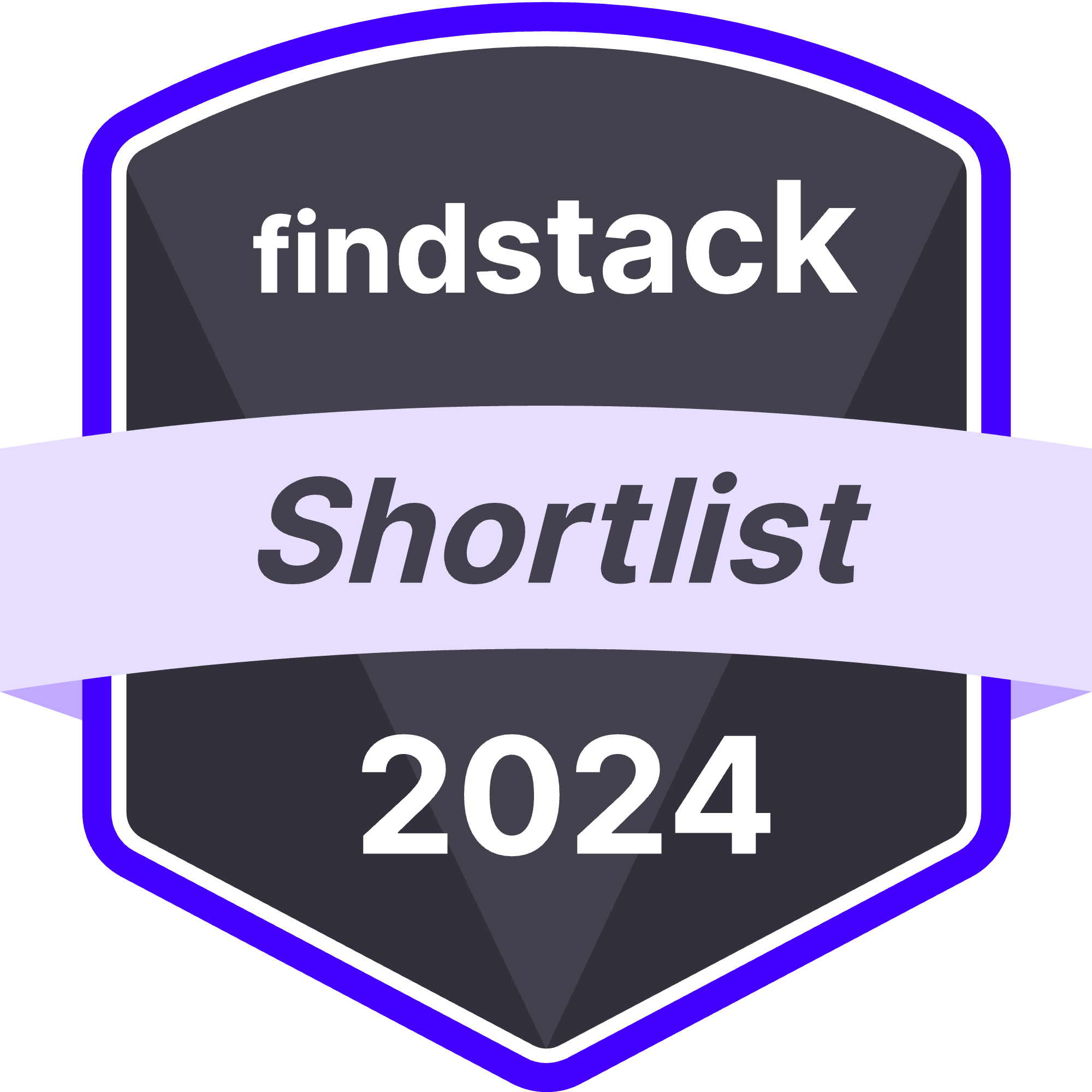


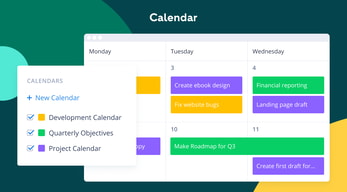
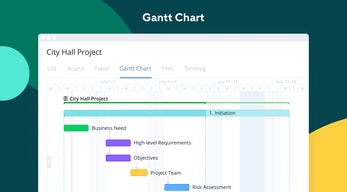
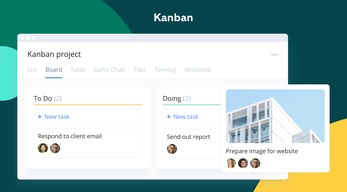
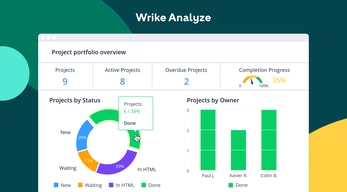

Wrike has helped us grow our business by having all of our projects managed in one place. In addition, we like being able to collaborate with our team members and tagging people on tasks/projects.
Wrike is expensive. The more seats you add, the more you pay. As a small business, my subscription fee is one of my biggest operating expenses.
Wrike eases collaboration across teams - makes it easy for us to communicate, collaborate and review work. We also like that we can store documents and other resources in each project folder.
The hundreds of features that Wrike offers make the tool very complete for different uses. I can manage working time, distribute demands, approve content, work on special projects and even interface with other corporate areas.
I wish the tool was more intuitive. Sometimes, I have difficulty locating things i need in the interface and having the tools I need at hand.
Wrike has helped me with time management, task management, priorities and projects, as well as optimizing material approval flows.
The ability to organize and track projects effectively.
The gant chart can be a little overwhelming to organize if not done correctly.
The biggest thing that Wrike is solving for our company is not overlooking tasks in projects.
Wrike makes it easy for our team to stay on top of tasks. It utilizes multiple views so our team members can stay focused and choose what works best for each individual.
Wrike tends to hit the mark on all spots when it comes to being a great project management software. There's nothing that I dislike about this platform.
Wrike is a crucial aspect when it comes to team collaboration and reviewing task progress.
I'll say this first, Wrike felt intimidated. After messing around with it and seeing how other co-workers use Wrike, I slowly picked it up. It makes a good checklist of things I need to do if you add the chrome plug-in as a companion. I see what gets assigned. I LOVE when you reference another wrike, you can see the status of it in the description of another. Very handy! Conveniently, Wrike contains a few forms of automation that lift some repetition from your workload. Without that, it wouldn't be as helpful as other task management systems available in the market. I like how the eco-system allows mentioning other users within a comment or Wrike task. It helps involve the correct people to get the jobs completed. Another feature that is VERY useful for me is the tags. Tagging helps me know where this Wrike is related to, which makes everything come together.
As I mentioned before, going into it without help is very discouraging since it's a complex web API with many moving parts. I think to myself, how do I add custom rules to automate some tasks? Unfortunately, you need to dig for that answer since it's not straightforward. I would like it if Wrike provided an easier way to implement the chrome plug-in and have a way to make templates via the plug-in. It would make managing my tasks substantially easier if that were possible.
It's solving a lot of organizational task management issues. It helps keep everyone on point about what you should be doing and when the task is due. Helps that when I go OOO, it notifies project managers that I won't be available. Another way it's helping me is by providing a way to track how much time I spend on each task. By using the timer, I can estimate how much I take and figure out a way to optimize my time and know how to allocate that time to essential tasks that require my attention more. Other things that help me solve are keeping everything in one place and showing me what's related to which Wrike.
It is a great visual tool for tasks and assignments It helps with productivity and organization It keeps a good level of performance review
Probably the number of irrelevant notifications when adding tasks or changing a part of a project.
Task management difficulties. Inefficient communication when assigning tasks Difficult visualization of dashboards It helps with productivity and organization It keeps a good level of performance review
My To Do section. I like the layout of Wrike. The different completion d
Not intuitive. Lots of features make it difficult to navigate easily
Managing multiple teammates at my company organization and letting us know what are our low and high priority tasks. I'm never left guessing as to what I have to do during my day.
- creating projects, tasks and subtasks with dates and statuses for them individually - dashboards are highly effective in grouping your specific custom fields - great to add tasks to multiple projects - easy to use - great workflow system - great tool for time management, keeping on top of deadlines and deliverables for projects
- Unable to view certain statuses in the calendar format - can't show the day viewpoint in the calendar
- issues of specific tasks and subtasks being due at different times and can easily manage that - various viewpoints (dashboards, table format, calendar, etc) to see tasks due and coming up - easy to manage in terms of changing dates and statuses - can easily keep on top of things in terms of business timelines and deadlines - can easily see specific assignees tasks - easy workflow use
Task management is excellent. We are using a workflow plugin which works best to see teams' occupancy.
Reports can be better. The desktop report should have more categories/filters.
We are solving our billable-nonbillable categorisation problem in our organisation which wrike solve in the best way.
Wrike is a versatile platform capable of managing simple and complex business process needs. It's also an intuitive tool that new users can pick up rapidly.
The platform doesn't always give you full control of user permissions.
Wrike helps to align on key stakeholders on the progress and details pertaining to a project.